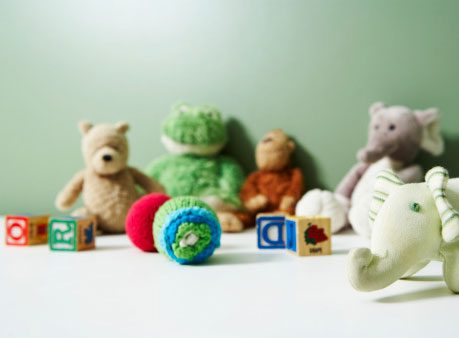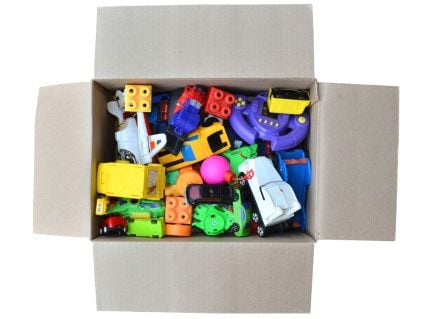
Talk About Donating
Keeping in mind your child’s age and maturity, talk to them about what you are doing and why you are doing it. Any communication should be straight forward and something that your child will be able to relate to. A statement like “we are giving up your teddy bear so that another little boy your age who doesn’t have one can play with it” works well. Your child knows where the toy is going and he will be able to understand that other children like to play with teddy bears, too.

Set Targets
Many children may show resistance to giving up their toys, even if they haven’t used them for a long time. Set a quota for them instead of just blankly asking children to pick which toys to give away. Set out two blankets designating one for toys to keep and one for toys to give away. Explain that for every toy they keep, they have to give one away. Alternatively, set out a few toys, explain that you need a certain number to give away to charity, and let them choose which ones to give up.

Remember to Involve the Child
You may think that your child is not playing with certain toys, but they may be devastated to find out that their favourite doll is now gone. Involving the child and letting them make their own choices is both more empowering and less deceptive than sneaking toys away. If you’re being met with too much resistance, leave it for another day when you can try different tactics.

Set an Example
Be honest with yourself and look at the example you are setting for your children. If children see adults giving away unused items, they are more likely to mimic that behavior. Even better is to get them involved in the process. One day might be devoted to your overflowing closet and the next to the kid’s toy box.

Make it Fun
Giving away toys shouldn’t be all doom and gloom. Try building it up to a special occasion, making a game of it, or playing their favourite music. You could even make up a song about giving away toys or dress up in a special ‘toy giving’ outfit – anything to keep the atmosphere light and fun will help minimize tears. If you find yourself or your child getting frustrated, it may be time to take a break.

Set Aside Time
How long does it take you to decide whether to donate those old clothes? Now think about your child who may be asked to decide which of their cherished toys to give away. Set aside plenty of time so that your child is not rushed, and you are not losing your patience. This will help keep the atmosphere positive and let your children make choices without too much pressure.

Make it a Habit
If your child has been giving up their toys since they were young, they are less likely to offer resistance in the future. Try making it a habit before a major annual holiday like Christmas or a birthday. This way you can explain that you are making room for the new toys to come. If you are asking your child to give up toys when there is no celebration in sight, that big empty toy box might bring up unwelcome reminders of the toys it once contained.

Try a Grace Period
If your child is still unsure about giving up her toys, ask them to place some of them in a box. Explain that they will be there if she wants to play with them, but set them aside on a shelf or in the closet. If a month passes and the box is still not open, go ahead and explain that they will be donated to charity.

Make Them Feel Appreciated
Donating is a feel-good activity, but it may not feel so good for the little ones who don’t understand why their toys are disappearing. Make sure that you let them know how proud you are of their efforts and use specific examples when giving praise. “Mom is so proud that you are giving up your trucks so another child can play with them,” works well as it is specific and relatable. They may not get good vibes from the act of giving itself, but they can get a great feeling through interaction with adults who are helping them.